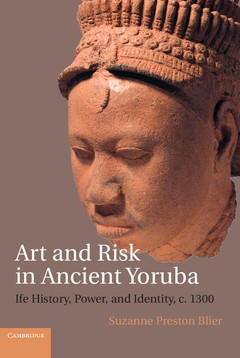Description
Art and Risk in Ancient Yoruba
Ife History, Power, and Identity, c. 1300
Author: Blier Suzanne Preston
This book examines the intersection of art, risk and creativity in early African arts from the Yoruba center of Ife.
Language: English
Approximative price 40.64 €
In Print (Delivery period: 14 days).
Add to cart
Art and Risk in Ancient Yoruba
Publication date: 11-2017
Support: Print on demand
Publication date: 11-2017
Support: Print on demand
Approximative price 117.70 €
In Print (Delivery period: 14 days).
Add to cart
Art and Risk in Ancient Yoruba
Publication date: 04-2015
595 p. · 19x26.1 cm · Hardback
Publication date: 04-2015
595 p. · 19x26.1 cm · Hardback
Description
/li>Contents
/li>Biography
/li>
In this book, Suzanne Preston Blier examines the intersection of art, risk and creativity in early African arts from the Yoruba center of Ife and the striking ways that ancient Ife artworks inform society, politics, history and religion. Yoruba art offers a unique lens into one of Africa's most important and least understood early civilizations, one whose historic arts have long been of interest to local residents and Westerners alike because of their tour-de-force visual power and technical complexity. Among the complementary subjects explored are questions of art making, art viewing and aesthetics in the famed ancient Nigerian city-state, as well as the attendant risks and danger assumed by artists, patrons and viewers alike in certain forms of subject matter and modes of portrayal, including unique genres of body marking, portraiture, animal symbolism and regalia. This volume celebrates art, history and the shared passion and skill with which the remarkable artists of early Ife sought to define their past for generations of viewers.
Introduction: art, risk, and creativity; Part I. Art, Risk, and Identity: 1. Art making: artists, subjects, technologies, and media; 2. Experiencing art: sight, site, and perspectives of viewing; 3. If looks could kill: aesthetics and political expression; 4. Embedding identity: marking the Ife body; Part II. Politics, Representation, and Regalia: 5. A gallery of portrait heads: political art; 6. Animal avatars: art, identity, and the natural world; 7. Crowning glory: the art and politics of headgear; 8. Battling with symbols: scepters, staffs, and seats; Conclusions.
Suzanne Preston Blier is Allen Whitehill Clowes Professor of Fine Arts and Professor of African and African American Studies at Harvard University, Massachusetts. Her first book, The Anatomy of Architecture: Ontology and Metaphor in Batammaliba Architectural Expression (Cambridge, 1987) won the Arnold Rubin prize. Her second book, African Vodun: Art, Psychology, and Power (1995), won the Charles Rufus Morey Prize. Other books include African Royal Art: The Majesty of Form (1998), Butabu: Adobe Architecture in West Africa (2003) and Art of the Senses: Masterpieces from the William and Bertha Teel Collection (2004). She was a member of the Collège de France International Scientific and Strategic Committee (2011–13) and is on the board of the College Art Association. Her past fellowships include CASVA (Paul Mellon Senior Fellow, the National Gallery of Art), John Simon Guggenheim, the Radcliffe Institute, National Endowment for the Humanities (NEH), the Institute for Advanced Study (Princeton), Fulbright Senior Research, Social Science Research Council, American Council of Learned Societies (ACLS) and the Getty Center for the Study of Art.
© 2024 LAVOISIER S.A.S.




